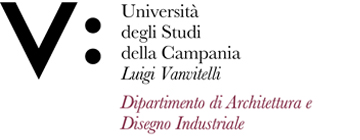Giorgio FRUNZIO
Insegnamento di ELEMENTI DI SCIENZA DELLE COSTRUZIONI
Corso di laurea in SCIENZE E TECNICHE DELL'EDILIZIA
SSD: ICAR/08
CFU: 8,00
ORE PER UNITÀ DIDATTICA: 64,00
Periodo di Erogazione: Primo Quadrimestre
Italiano
| Lingua di insegnamento | Italiano |
| Contenuti | Richiami di Analisi vettoriale. Gepmetria delle aree. |
| Testi di riferimento | Leone Corradi dell’Acqua, C. Comi: Introduzione alla meccanica strutturale. Ed. Mc Graw Hill. |
| Obiettivi formativi | Il corso si propone di fornire gli strumenti necessari per affrontare lo studio di strutture monodimensionali, in ambito lineare, soggette a sistemi di forze note. |
| Prerequisiti | L'approccio al corso richiede la disponibilità, da parte dell'allievo di voler cercare nella realtà il modello matematico attraverso gli strumenti che sono stati forniti anche nei corsi precedenti di: Fisica; Matematica. La conoscenza degli elementi di base di queste materie è necessaria per seguire proficuamente il corso. |
| Metodologie didattiche | Lezioni frontali - Esercitazioni in aula - Attività laboratoriali – Si forniscono agli allievi le registrazioni delle lezioni attraverso la piattaforma. Nell'anno 2021/2022 il corso si tiene anche "a distanza" su piattaforma Teams assegnando periodicamente attività soggette a verifica. |
| Metodi di valutazione | Prove intercorso anche come attività online e Esame finale in cui l'allievo deve dimostrare la capacità di risolvere una struttura iperstatica, di calcolare uno spostamento nonché di valutare lo stato tensionale in una trave. |
| Altre informazioni | Le lezioni sono registrate su piattaforma e messe a disposizione degli allievi. È previsto un orario settimanale di incontro per chiarimenti e spiegazioni. |
| Programma del corso | Richiami di Analisi vettoriale |
English
| Teaching language | Italian |
| Contents | Review of vector analysis. Gepmetry of the areas. |
| Textbook and course materials | Leone Corradi dell’Acqua, C. Comi: Introduzione alla meccanica strutturale. Ed. Mc Graw Hill. |
| Course objectives | The course aims to provide, in a first phase, the necessary tools to deal with the study of one-dimensional structures, in a linear context, subject to known force systems. |
| Prerequisites | The approach to the course requires the availability, on the part of the student, to seek the mathematical model in reality through the tools that were also provided in the previous courses of: Physics; Mathematics. Knowledge of the basic elements of these subjects is necessary to successfully follow the course. |
| Teaching methods | Lectures - Classroom exercises - Laboratory activities - Students are provided with recordings of the lessons through the platform. In the year 2020/2021 the course was held "online" on the Teams platform, periodically assigning activities subject to verification. |
| Evaluation methods | Tests also carried out as an online activity and final exam in which the student must demonstrate the ability to solve a hyperstatic structure, to calculate a displacement and to evaluate the stress state in a beam. |
| Other information | The lessons are recorded on the platform and made available to the students. There is a weekly meeting time for clarifications and explanations. |
| Course Syllabus | Review of vector analysis |








